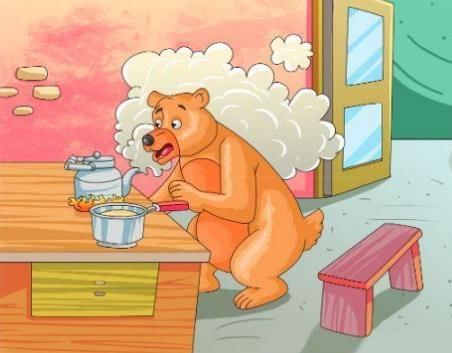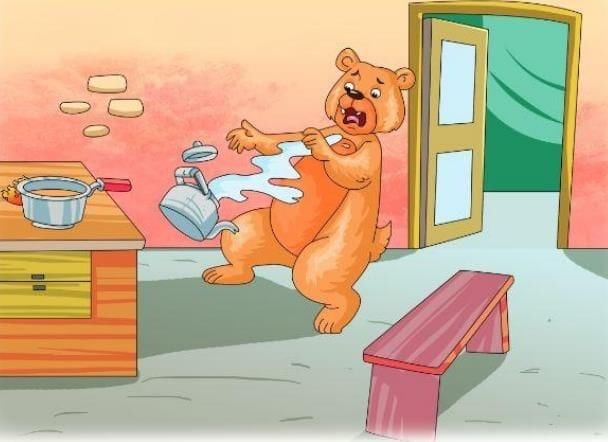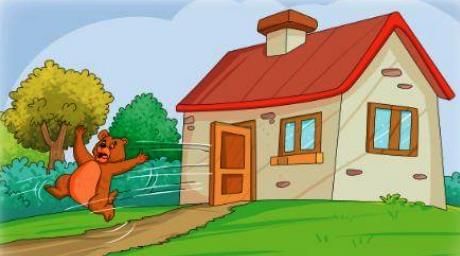The Bear and the Kettle Chapter Notes | English Class 2 ICSE PDF Download
| Table of contents |

|
| Introduction |

|
| Key Points |

|
| Explanation |

|
| Message |

|
Introduction
This chapter tells a fun story about a big brown bear who lives in a forest. One day, he gets very hungry and cannot find food. He goes to a village and enters a house, where he meets a kettle with boiling water. The story shows what happens when the bear does not understand the kettle and gets into trouble.
Key Points
The story is about a big brown bear who lives in a forest.
- The bear is very hungry and looks for food in a village.
- He goes into a house and checks the kitchen for food.
- He sees a kettle with hot water and steam.
- The steam burns his nose, and he thinks the kettle is a strange animal.
- He tries to squash the kettle and gets more burns.
- People come to the house, and the bear runs away.
- He goes back to the forest and never visits the village again.
Explanation
The story begins with a big brown bear living happily in a large forest. One day, he cannot find any food and feels very hungry. To solve this problem, he leaves the forest and goes to a small village to look for something to eat. He finds an open door and quietly enters a house, hoping to find food. Inside the kitchen, he searches everywhere but finds nothing to eat.

Then, he notices a kettle on the fire with boiling water and steam coming out. He did not know what it was. He sniffed the steam. It burned his nose. Thinking the kettle is a strange animal with a sting, he gets angry and tries to punish it. He picks it up with his paws and presses it against his chest, which causes more burns. The pain becomes too much, and he throws the kettle down, spilling hot water on his feet.

This makes his toes hurt, and he starts jumping around the room. The noise brings people to the house, and the bear realizes he is in danger. Fearing someone might shoot him, he runs past the people and hurries back to the forest with his sore feet. He feels happy to be safe in the forest and decides never to go near the village again because of the strange creature with the sting.

Message
The story teaches us to be careful with things we do not understand. It shows that curiosity can sometimes lead to trouble, and it is better to ask for help when we see something new.
New Words with Meanings
- Peeped in: Looked quickly and secretly.
- Alas: A word used to show sadness.
- Spout: The tube-like opening of a kettle where liquid comes out.
- Grunt: A low, short rough sound made by an animal.
- Sting: A pointed part that causes pain or injury.
- Creature: Any living thing that can move on its own, like an animal.
- Crush: To press something hard until its shape changes or it breaks.
- Squeezed: Pressed hard from all sides, especially with fingers.
- Sore: Painful because of an injury or infection.
- Rage: Strong anger.
- Glad: Happy.
|
38 docs|19 tests
|
FAQs on The Bear and the Kettle Chapter Notes - English Class 2 ICSE
| 1. What is the main theme of "The Bear and the Kettle"? |  |
| 2. Who are the primary characters in "The Bear and the Kettle," and what roles do they play? |  |
| 3. How does the setting influence the events in "The Bear and the Kettle"? |  |
| 4. What lessons can readers learn from "The Bear and the Kettle"? |  |
| 5. How does the author use symbolism in "The Bear and the Kettle"? |  |



















